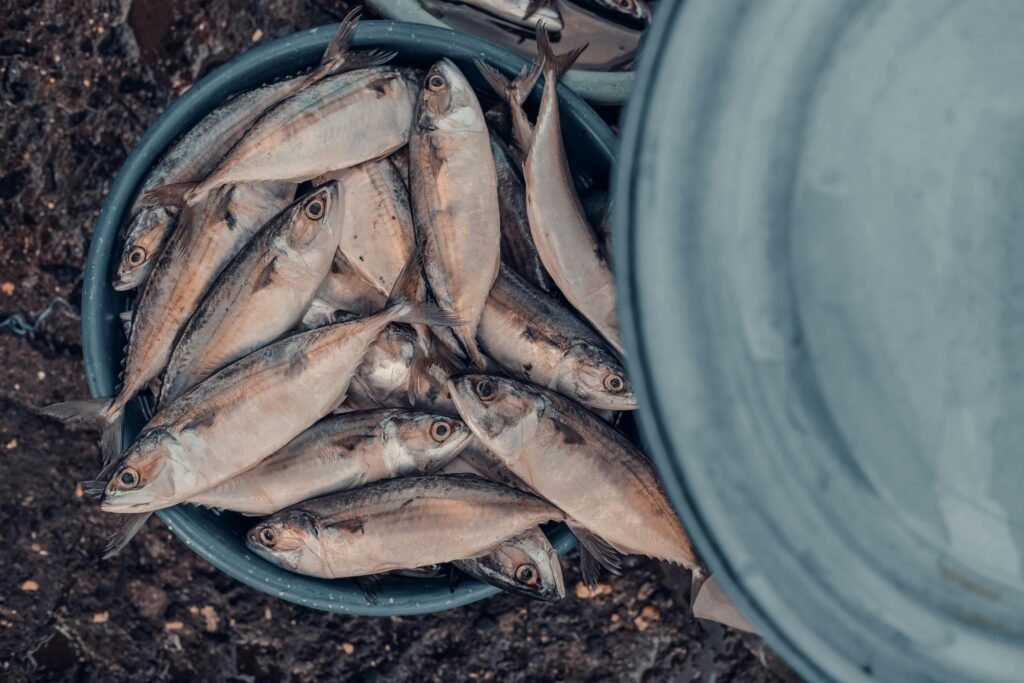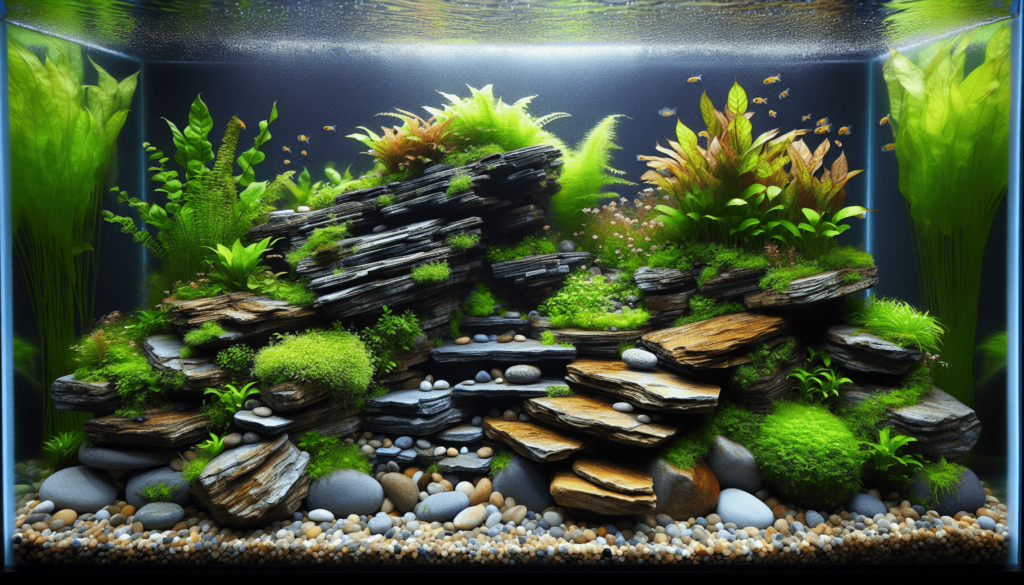Mastering Aquascaping Stones: The Ultimate Guide” takes you on a wonderful journey into the magic of aquascaping, where you learn how to turn simple rocks into beautiful underwater landscapes. You’ll find out how important these stones have been throughout history, and discover how their use has evolved. The guide uncovers the latest trends and gives you easy explanations of tricky words. By exploring real-life examples and different ideas, you’ll see how special aquascaping stones are for making fascinating fish tanks. Finally, you’ll get a peek into the future, imagining what new wonders might come next in this watery world. Have you ever wondered how people create those beautiful, underwater landscapes in aquariums that look like tiny rainforests or stunning mountains? Well, those amazing scenes are often made using aquascaping stones!

Overview
Aquascaping stones are special rocks used to decorate aquariums. They might seem simple, but they help transform tanks into magical underwater worlds. People who use these stones are called aquascapers, and they work like artists, using nature’s materials to create breathtaking scenes.
Thesis Statement
In this guide, you will learn all about mastering aquascaping stones—from the types of stones to how you can use them to make your aquarium look amazing.
Historical Context
Aquascaping might seem like a new hobby, but it actually has roots that go back many years. It started gaining popularity in the 1990s, thanks to a Japanese man named Takashi Amano. He turned aquascaping into an art form, inspiring many to create their own beautiful underwater scenes. Since then, people all over the world have been excited to try their hand at it.
Current Trends
Recently, aquascaping has grown even more popular. Many people are sharing their designs online, and there are even competitions to see who can make the most beautiful aquarium. More cool and interesting stones are becoming available, giving you even more ways to make your tank unique and beautiful.

Key Concepts and Definitions
Before we dive deeper, let’s go over some key concepts and definitions:
- Aquascaping Stones: Rocks used for creating decorative scenes in aquariums.
- Aquascapers: People who design and create aquascapes.
- Aquascape: The underwater scene created within an aquarium.
Types of Aquascaping Stones
There are many types of stones you can use for aquascaping. Some are smooth, while others are rough and jagged. Each type gives a different look and feeling to your aquarium.
Seiryu Stone
Seiryu stones are very popular in aquascaping. They have a unique blue-gray color with white thread-like lines running through them. These stones can make your aquarium look like a beautiful mountain range.
Dragon Stone
Dragon stones are brown with lots of holes and textures that make them look like dragon skin. These rocks are lighter than others, making them easy to move around and place in your tank.
Lava Rock
Lava rocks are dark and porous, which means they have many tiny holes. They are lightweight and perfect for growing plants on because their texture allows roots to grab onto them easily.
Ryuoh Stone
These stones are light gray and have many crags and sharp angles, resembling rugged mountain peaks. They are excellent for creating dramatic landscapes.

Detailed Exploration of Aquascaping Stones
Let’s dive deeper into how you can choose the best stones for your aquascape and the steps to create your own underwater paradise:
Choosing Your Stones
Picking the right stones is the first and most important step. Consider the following:
- Color: The color of the stones should match or contrast with your aquarium plants and your fish.
- Shape: Different shapes can create different effects. Jagged stones can look dramatic, while smooth stones can make your tank look calm and peaceful.
- Size: Balance large stones with smaller ones to create a natural look.
Placing the Stones
Once you have your stones, it’s time to place them in your tank. Here are some tips:
- Start with the Largest Stones: Place the biggest stones first to create the main structure.
- Add Medium Stones: Position medium-sized stones around the larger ones to add detail.
- Finish with Small Stones: Use small stones to fill gaps and fine-tune your design.
Creating Depth and Layers
To make your aquascape look more three-dimensional, create depth and layers by placing stones at different heights. You can do this by:
- Sloping the Substrate: Make the substrate (the gravel or sand at the bottom of your tank) slope from front to back or side to side.
- Stacking Stones: Stack stones to create hills or mountains.
Example 1: Mountain Aquascape
Let’s look at a Mountain Aquascape as an example. This design uses mainly Seiryu stones.
- Select Seiryu Stones: Choose some large, medium, and small Seiryu stones.
- Create a Slope: Make a slope using substrate so it’s higher at the back of the tank.
- Place Large Stones: Position the largest stones first to form the main mountains.
- Add Medium Stones: Place medium stones around the main mountains to add variety.
- Fill Gaps: Use small stones to make the scene look natural and complete.
Example 2: Forest Aquascape
Another great example is a Forest Aquascape, where you use lava rocks because they’re perfect for growing plants.
- Select Lava Rocks: Pick various sizes of dark, porous lava rocks.
- Position Large Rocks: Place large rocks at the back to form the main part of the forest floor.
- Add Medium Rocks: Use medium rocks in front of the larger ones to create a natural transition.
- Attach Moss and Plants: Tie moss and other small plants to the lava rocks. They will grow and make your tank look like a lush forest.
Comparison of Different Perspectives
Different aquascapers have various philosophies. Some prefer a natural look that mimics nature closely, known as Nature Aquascaping. Others might lean towards a more artistic approach, known as Iwagumi style, which uses mainly stones and very few plants.
Nature Aquascaping
- Main Focus: Plants and natural look.
- Materials: Stones, driftwood, various plants.
- Goal: Make the tank look like an untouched part of nature.
Iwagumi Style
- Main Focus: Stones and minimalist plants.
- Materials: Mainly stones and some grass-like plants.
- Goal: Create a zen-like, simple yet powerful landscape.
Impact Assessment
The different approaches have various impacts on how your aquarium will look and feel:
- Nature Aquascaping: Creates a lush, green paradise, making the tank feel like a forest or meadow.
- Iwagumi Style: Offers a sleek and serene environment, focusing on the stones as the main attraction.
Future Directions and Implications
Aquascaping is continuously evolving. Here are some predictions and implications for its future:
Predictions
- New Stone Types: As aquascaping grows, new types of stones will be discovered and used.
- Technological Advancements: Tools and techniques for placing and maintaining stones will improve, making it easier for everyone to try aquascaping.
Implications
- Environmental Awareness: As more people get into aquascaping, they’ll learn to appreciate nature and be more mindful of environmental conservation.
- Art Meets Science: Aquascaping will continue to be a blend of artistic creativity and scientific understanding of plants and fish.
Conclusion
Recap
You’ve learned about the history and different types of aquascaping stones, how to choose and place them, and even explored different styles and their impacts.
Final Thought
Next time you look at an aquarium, think about the stones and how much effort and artistry goes into placing each one. Why not give it a try yourself and create a tiny, beautiful world at home?
Engagement
If you enjoyed this guide, why not share it with your friends and family? Got questions or want to show off your aquascape? Leave a comment and let’s chat!
Credible Sources
- Takashi Amano’s works on Nature Aquascaping
- British Journal of Aquascaping
- “The Art of the Planted Aquarium” by Oliver Knott
Happy aquascaping!



